For all the furore about the Dutch style of dressage riding, when they teach, Holland’s number one dressage team, Edward Gal and Hans Peter Minderhoud, aren’t all that different from the teachers of dressage the world over… what they do in the warm up arena, and the competition ring, well that’s another story. In the meantime, enjoy the wisdom of the personable pair on display in this masterclass conducted at Equitana in Melbourne, back in 2012…
The session was featured the basics are the same the world over, and that while Edward might have a Dutch accent, there is nothing particularly Netherlandish about his training methods…
Working with his first pupil Denise Rogan and Virtuel, the message is familiar: “Try to get his neck a little longer, and when he gives, relax your hand. Go forward and then bring him back. That’s the first thing we do with young horses, lots of tempo changes, and vary the tempo changes so sometimes longer forward, and sometimes longer back, it is important that the horse keeps listening to you, keep changing what you do. It is better he waits for you before he goes forward. In the canter we do the same. Make him round and relaxed, don’t let him come back in the corner by himself, go forward and then go more forward. It doesn’t matter if his head comes up, what is important is to get the reaction from your leg. He goes to canter, but he is not really thinking forward, it is important that young horses really think forward. Every time you have a good reaction in your hand, relax it.”
“Don’t just ride on the outside rein, the contact on both reins should be equal. In the canter let him stretch, but feel that he stays in the same tempo. Pick up, go long, pick up, go long – and with no change in the tempo. Collect a couple of strides, then out. They need to learn when they collect, still think forward, otherwise they lose the jump in the collected canter.’
“Now ride him a little more in a competition frame. You need to practice this with a young horse – competition frame, then longer, then competition frame. Bring back the horse, go forward again, get even a bit more active when you collect…”
“This is a very nice horse to work with, very easy, thank you.”
story continues below the advertisement
The next pair in the ring are really two of the emerging superstars of the Australian dressage scene, Dave McKinnon and Bradgate Park Jatzz. This time it was Hans Peter on the mike, but the message was familiar:
“If we want our horses to go Grand Prix, we want it to look like they are doing it on their own, and that means we have to have an immediate reaction to our aids. First one is very soft, second, a little strong.”
“Lots of riders keep riding riding, it is better to do nothing and really feel what the horse is doing, then you can react. Lots just ride and ride, and don’t feel what the horse does.”
“If you only go forward and back again, the horse is thinking I go backwards after I go forward, on his own, and it is important that they don’t start thinking that way. They have to be listening to the rider. Don’t make it too difficult for him, just back a few strides and then relax and forward, but not so you go collect, collect, relax the hands and he goes forward on his own, you want him to go forward on your leg.”
“You don’t get that fancy collected trot from riding and riding it, you get it from transitions. Go forward, I think there are some extra gears.” Jatzz canters. “That’s okay, but don’t canter too long if he breaks, don’t give the reins away, give the reins if it is good.”
“If it’s good, just do nothing and react to what he does.”
“Now go shoulder-in.”
“That is a shoulder-in for a 7, but for more, you need more expression. Go a little forward in the exercise, go for a 9, but don’t go forward until you lose it, a few steps, then back again.”
Story continues below the advertisement
It was time to see the other part of the duo in action, Edward was riding the delightful Daisy in Paris (by Don Frederico). It looks as if the visitor enjoyed the experience, and so he might, the black mare was Elementary Horse of the Year, and looks fun to ride.
“We start with the basic, it is the same with all horses, always something to go back to. In trot, small tempo changes, if she starts running, bring her back, bring back, relax the hand, she has to wait…”
Hans Peter is on the ground commenting, “black really suits you, but we want a big working pirouette, not only easy and beautiful, we want you to work a bit. Don’t go on and on, just a few strides then forward again.”
Edward made a transition to walk, but explained that when you ride a horse, you never stop working: “You keep working as long as you are on them, make sure they are attentive to you.”
Hans Peter: “You don’t chat in walk, you should have the horse thinking about extended walk, thinking about you.”
I guess that’s why the lads each have an indoor arena at their training complex…
Edward was about to work on the flying changes but he started by riding counter canter around the arena and flexing Daisy in and out:
“First I do this in counter canter so she knows I can change the rein but she doesn’t change the canter, it is important that I can balance her and touch the outside (new inside) rein without her making a flying change. Now…”
It’s late.
Hans Peter was quick with the advice: “Collect her more on the hind legs, make her sit a little more. Lots of riders hang to the inside and pull the inside rein, but then they are always late. I prefer early behind to early in front.”
“You need control,” Edward stressed. “That’s why we do counter canter first. When you lose control, they are not straight, and they are changing by themselves.”
“Sometimes in the beginning of teaching the changes, the short diagonal is best,” says Hans Peter, “Ride them almost to the wall, they come back a bit, and it makes it easier for them to change. Make it easy for them, always do it at the same spot, get a nice change, then get them back on the aids again.”
Time for the extended trot, and of course the mare looks wonderful. “Aah, says Hans Peter, “You can make an extended trot.” But when Edward gets on the diagonal, she starts to run, so he takes her back and starts again.
“Good.” Then the remark that every visitor feels obliged to make. “I take her home.”
Story continues after the advertisement
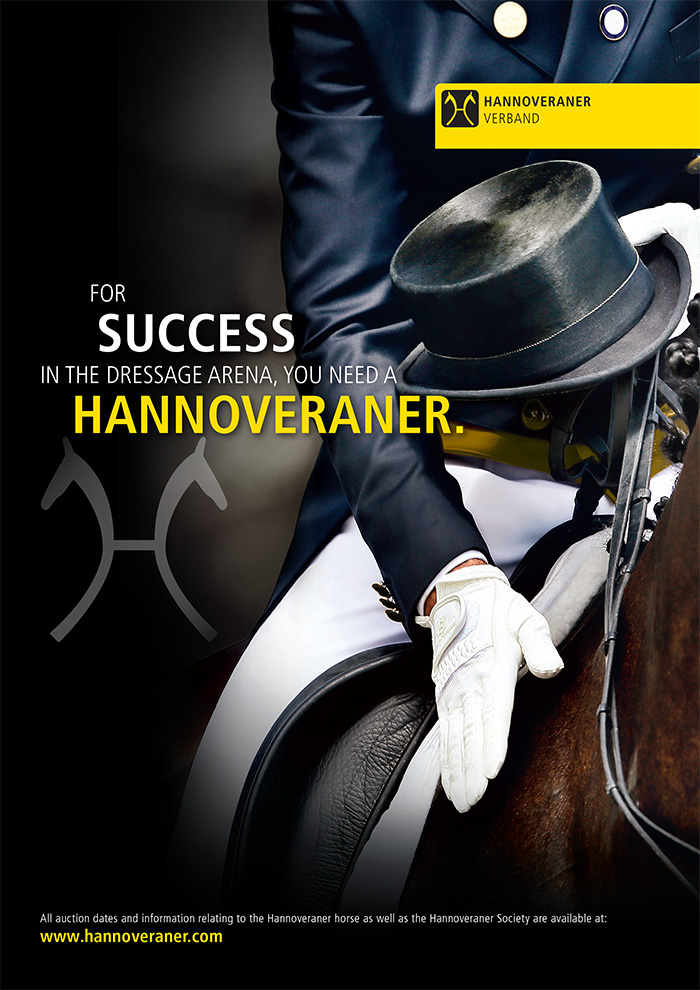
The next combination Edward worked with was the young Queenslander, Victoria Welch and her imported Hanoverian, Brentanus.
“He’s big but he’s a little slow,” came the critique, “make him faster in the walk. We need a big walk, but active through the whole body and quick. Now halt, because he is pushing (into the rein), we need him better connected and not pushing so much. Now trot, and make him rounder because when he goes forward, he comes up. We want his neck down and his back up.”
With Brentanus, Edward was able to work on the changes, but he wanted more than just a change: “The changes must be more expressive, really ride every stride. First make a circle so he gives in a little more, then ask for some three times changes.”
As with all the horses, Edward wanted the rider to be completely in control of the tempo. “Ask yourself, is he going by himself, or am I doing it. He needs to be thinking forward, but not running away. Think forward, bigger, more expressive…”
And so it went, horse after horse. Always the same message, go forward, come back, get them soft, get them on the aids, allow them to be expressive.
Brett tries to settle Good As Gold
The duo were doing their best to keep the crowd entertained, “Mate, mate,” they were singing out to Brett Parbery who looked somewhat less-than-comfortable on QEB (not quite) Good As Gold. Brett suggested that the lads take a few questions from the crowd while he tried to settle the horse that had been freaked by a whip cracking display out the back.
The horse is still not really all that calm when they decided to jump off the deep end and try a bit of piaffe. “It’s just playing piaffe,” Edward comments and suggests that the piaffe comes better out of the walk than the trot. “Try to teach piaffe out of walk and passage out of trot, then they learn the difference and you can make the transition piaffe to passage.
Hans Peter enters the arena on Gymstar One, the taller of the twosome seems to have drawn the short straw when it comes to horseflesh. “We would have loved to have brought one of our horses here,” Hans Peter says with feeling, “but it was not possible. I am riding him in a snaffle because it is easier. He is a hot Aussie, but I think it will be okay.”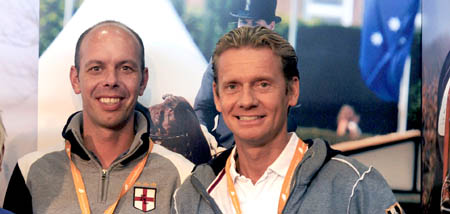

Like to breed to Edward’s star ride, Totilas, in Australia? There’s lots of top European Blood Lines available from International Horse Breeders: Go to www.ihb.com.au and make your selection.
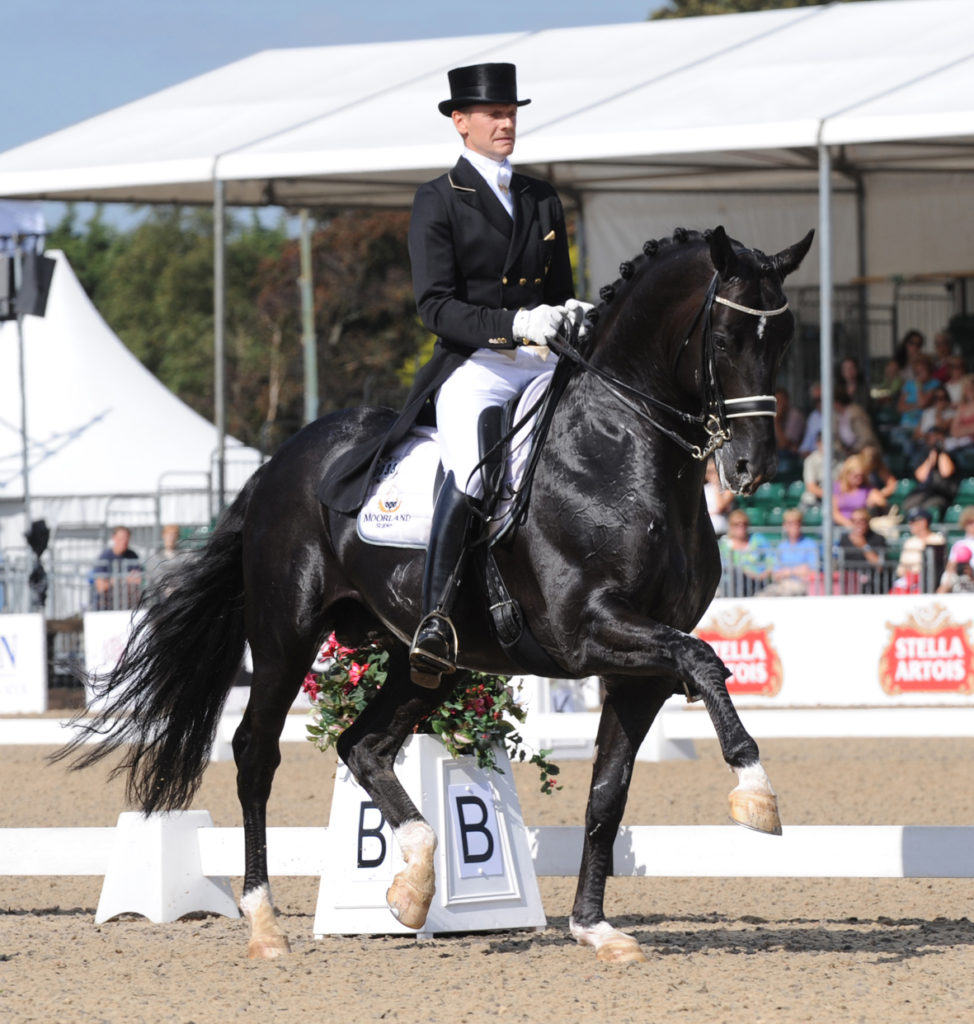

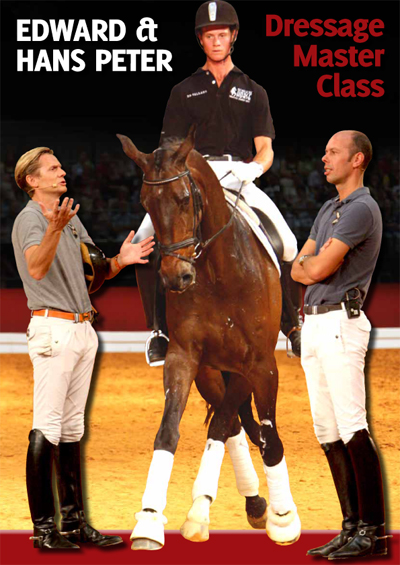
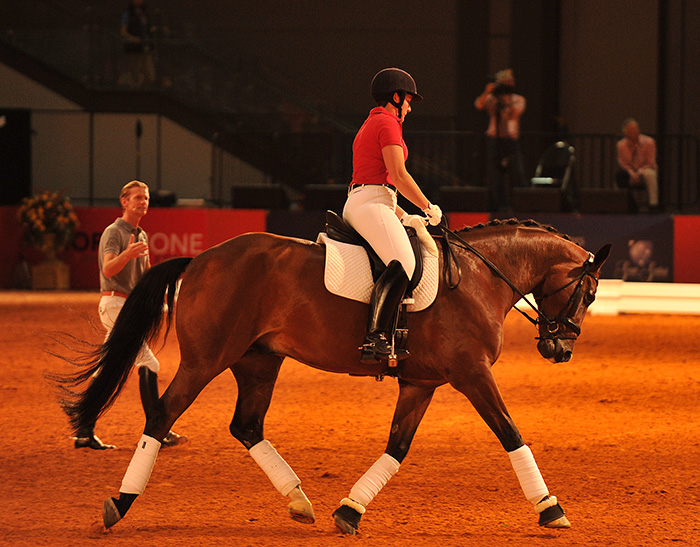
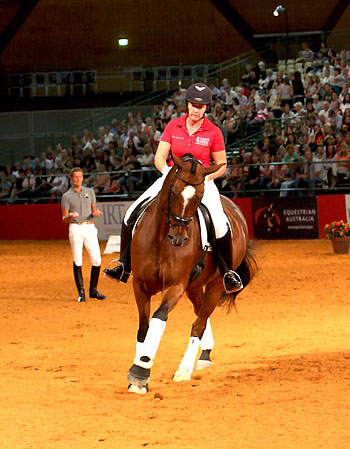
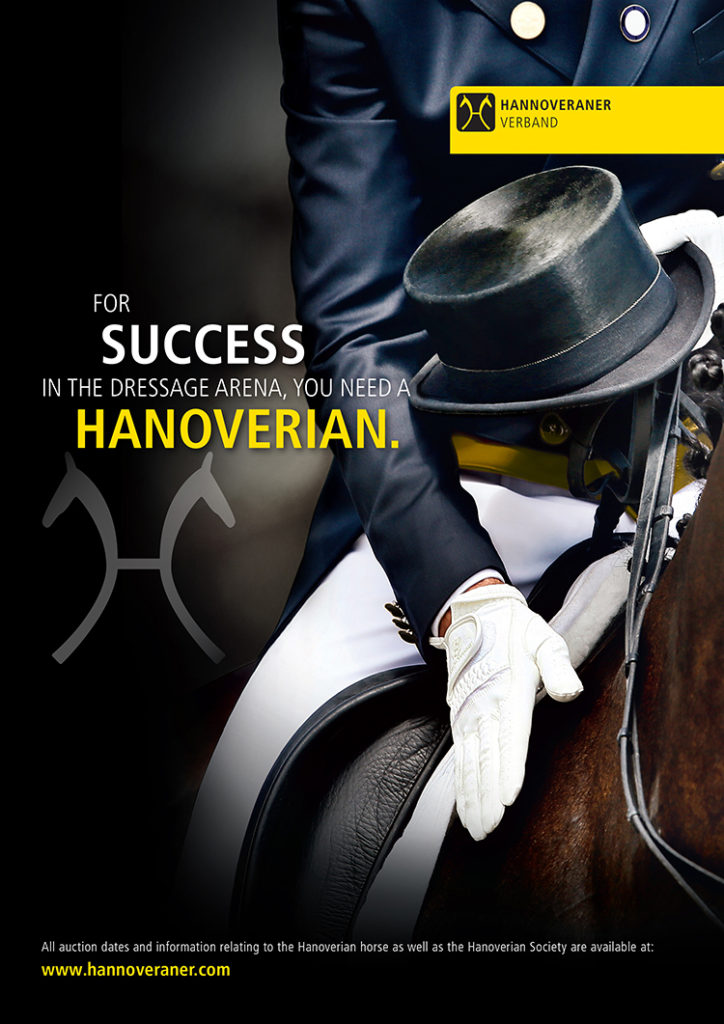
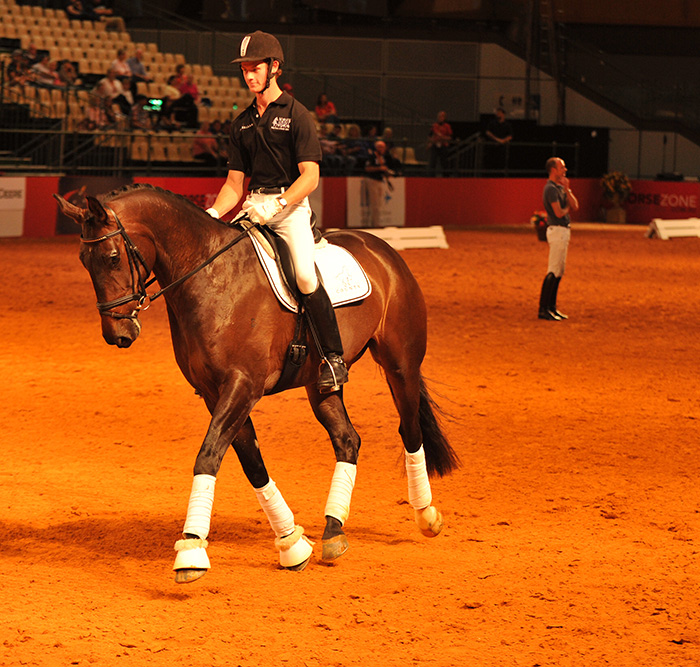
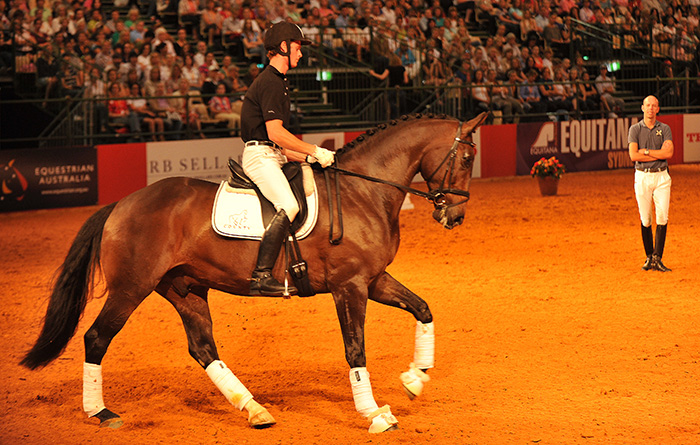
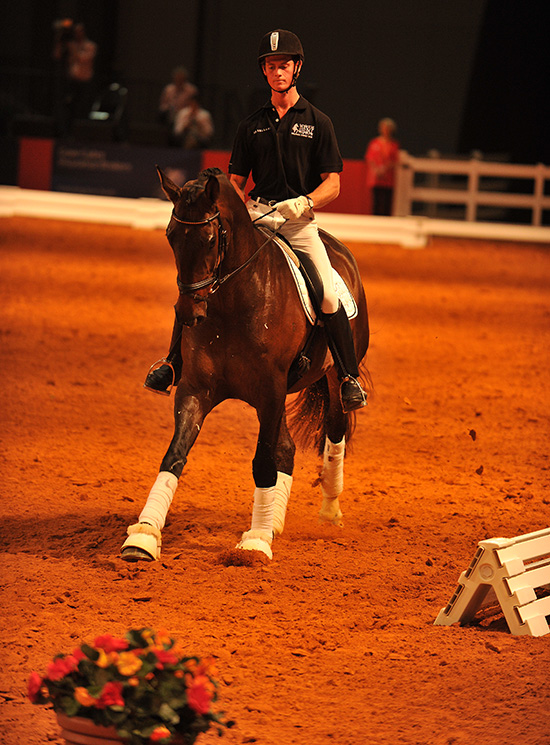
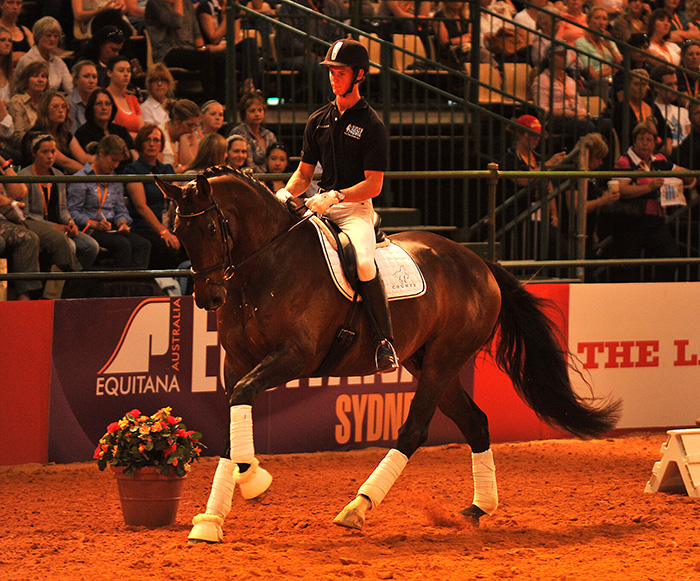
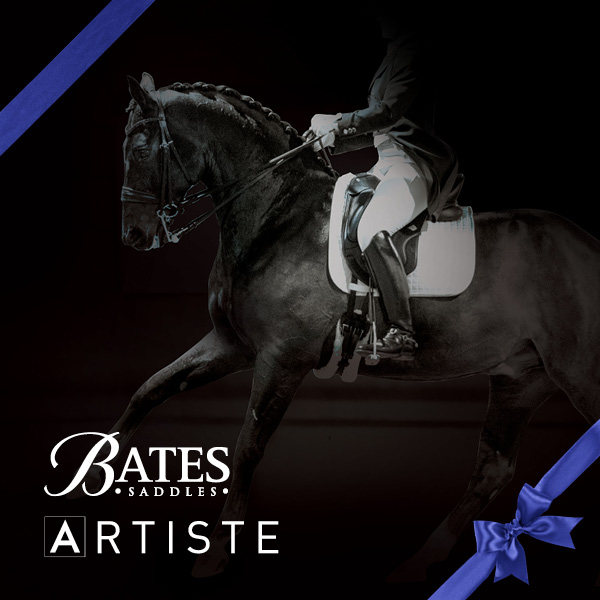
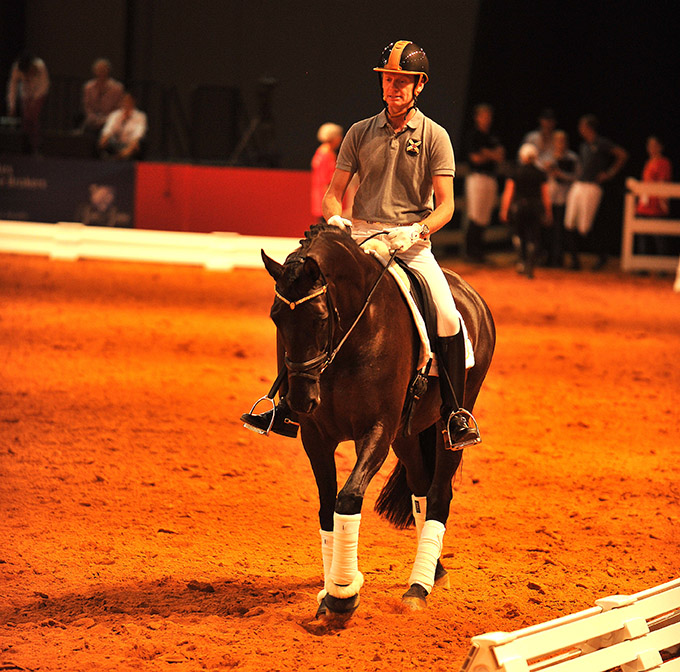
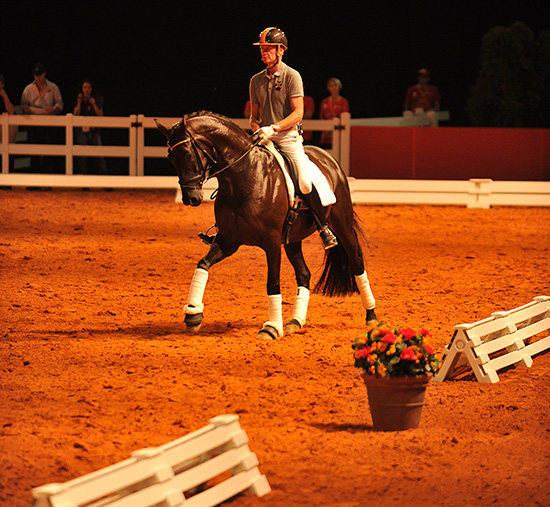
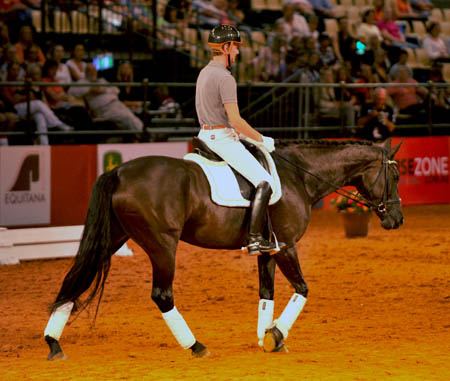
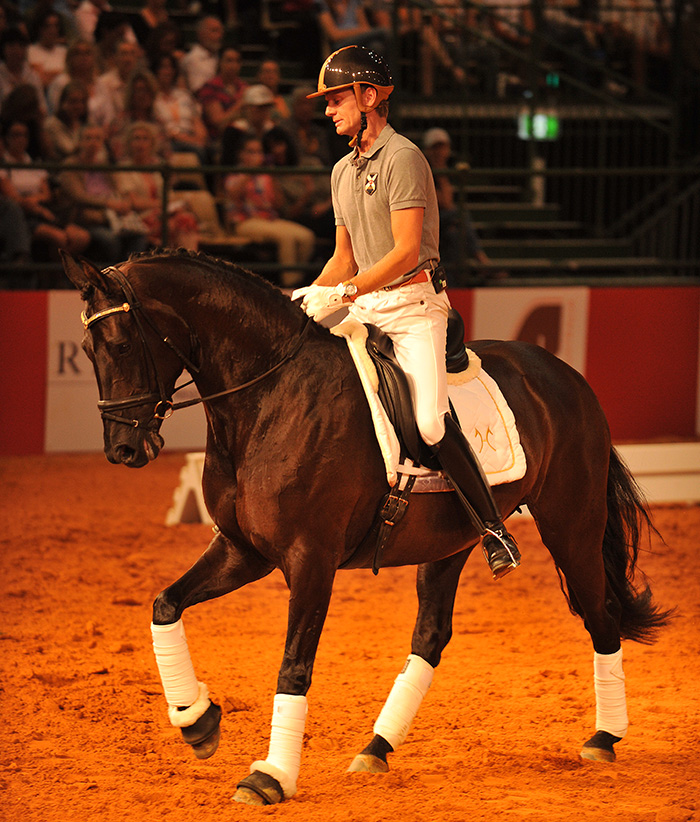
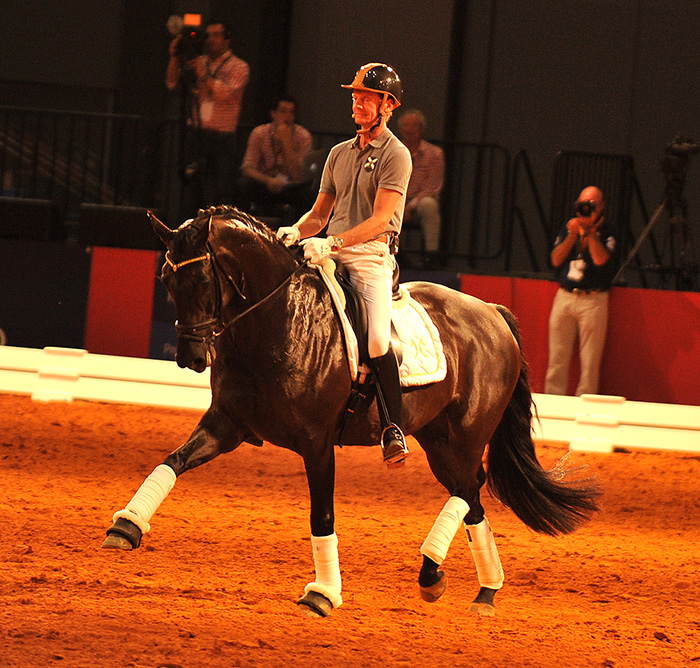
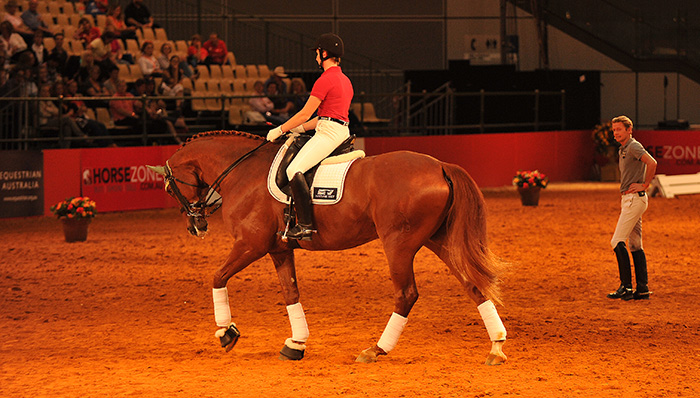
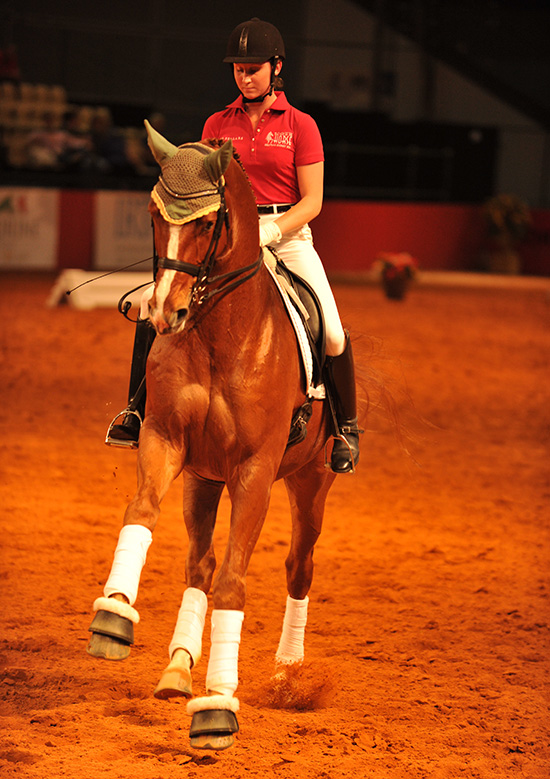
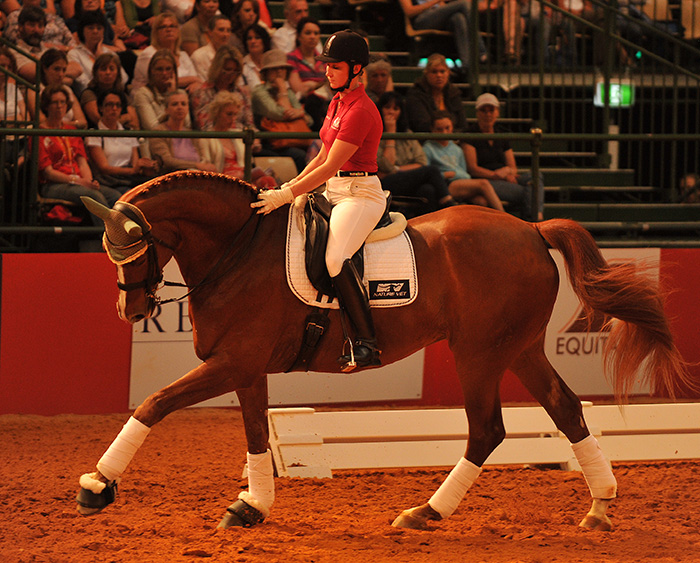

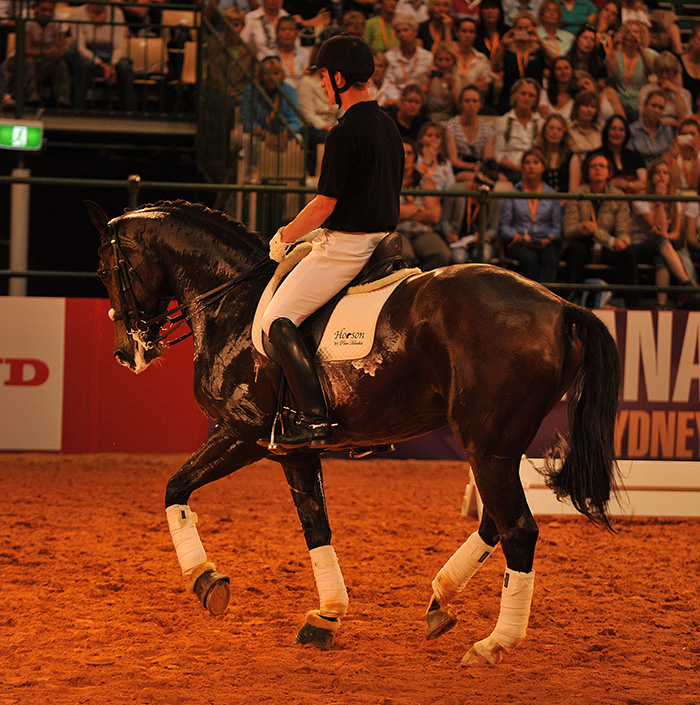
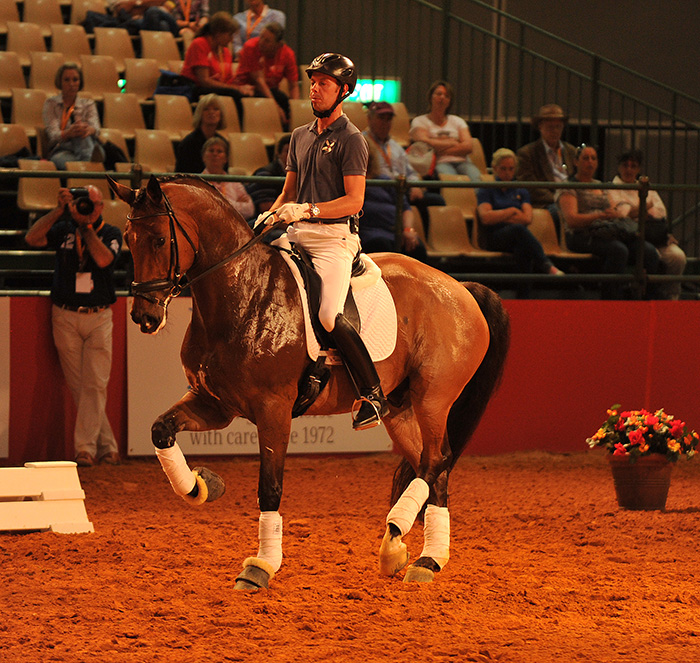
Maybe it helps to have the clinician(s) work with the combinations the day BEFORE, in private….or at least get to see videos beforehand so they can decide what to work on in public.
Couold’nt agree more chris.
I feel for the riders in the clinic. When invited to ride at “The Mane Event” our Equitana, I contact organizers and plan to arrive at least a day ahead of the clinic to school in the presentation arena. It really helps me and the horses to adjust to some of the venue challenges and be able to focus on the instruction and comments offered by the clinician. The organizers usually give me a good rate on the stabling costs (at my own expense) and I arrange to bring a young horse along as a companion and for a valuable outing.
Very good reporting, and thank you for posting. I hope to visit the Gold Coast next winter. Can’t wait.